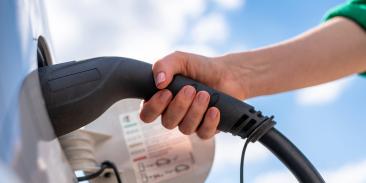Smart water meters can keep money from going down the drain
A longer version of this post was originally published on EDF’s Texas Clean Air Matters.
A few months ago, I logged into my online utility account and noticed I owed more than twice the amount I usually pay, all of the excess going to water.
We are water and electricity savers in our household, so what on Earth caused the spike?
The City of Austin dispatched someone to check the meter; nope, nothing on that end. Next, a plumber spent many hours and many of our dollars searching before finally finding a leak in the toilet.
By the time we had gone through all of that and gotten the toilet fixed, we had to pay our enormous water bill – plus the plumber’s bill.
Why should I have to go through that rigmarole just to find a leak? Wouldn’t it have been easier if a smart water meter had sent my utility and me a message the moment the toilet started to leak?
U.S. drinking water system gets a “D”
Unfortunately, water infrastructure in this country is sorely in need of a reboot.
The American Society for Civil Engineers gave the United States drinking water infrastructure a grade of a “D” in its 2013 Report Card for America’s Infrastructure, saying there are 240,000 water main breaks per year. And we’re still using antiquated “technology” in much of the sector.
Traditional water meters are not only less accurate than smart meters, but they also tend to lose accuracy as they age. The equipment must be replaced every 15-20 years on average, and many water utilities are now facing a natural replacement of their equipment.
So with this opportunity, why not prioritize equipment that’s more accurate and allows customers to be better informed about and respond accordingly to their usage?
Take a page from the electricity sector
The electricity sector has zoomed ahead on smart meters and installing smart grid technology across the country, whereas the water sector has been slower on the uptake. This is partially due to the fact that electricity (which travels through wires) is inherently easier to monitor through smart technology.
But there are other, more nuanced reasons too, such as the artificially low price of water and an insufficient business case to invest in a modern water system.
Smart water meters empower consumers
Advanced metering infrastructure for water, just as with electric meters, is a sophisticated, two-way communication system that allows the utility and the customer to receive and react to real-time information, such as price signals and usage. But it goes beyond that.
They can also help prevent further deterioration. For example, a smart meter is more sensitive to low water flows, making it more accurate and comprehensive.
By contrast, a traditional water meter measures total consumption of a building or home, meaning leaks are difficult to detect and customers can’t pinpoint inefficiencies.
By installing smart meters and sensors, both the utility and the customer are empowered with the information they need to improve efficiency and repair leaks earlier.
Conserving water should be key priority
In Texas where I live, billions of gallons of water are lost each year - and that’s in a state with a growing population and a growing water supply problem.
The old saying, “an ounce of prevention is worth a pound of cure” is wholly applicable here. So if water stress is the new normal, regulators should take steps now to ensure that we preserve what water we have left and safeguard supplies for the next generation.
If nothing else, your wallet (and toilet) will thank you for it.












Good Article!
Mickow
October 16, 2014 at 12:40 pm